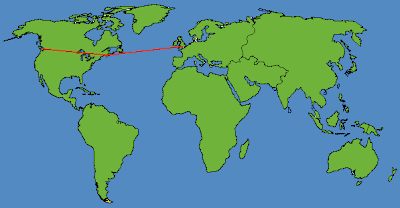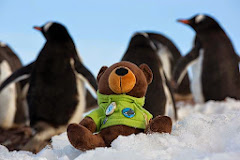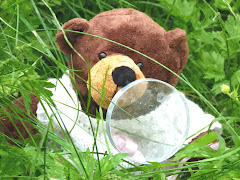As you can see I am still here in Kauai. As well as meeting lots of animals I have also met lots of Hawaiian people. They are very proud of their culture and heritage, but they are very friendly too. I found out that Papahanaumokua is Earth Mother. Wakea is Sky Father. They gave birth to all the Hawaiian islands, beginning with Pihemanu (Midway Atoll). This is where Fred started his journey of exploration and teaching about ocean at the very birthplace of all the islands he loves so much. This is also where his new best buddy, Barack Obama, was born too.
I also meet lots of children (Keiki) and they were very friendly and I learned a lot about how Hawaiian's think about water and the oceans. Water is Wai (Vie) and the word Wai also means wealth, so it is obvious how much value they place on water. It is also very clear that they also see oceans as fun. Water fun means going fishing for papio from the shore, swimming, going out in boats for ahi (yellow fin tuna) and going out surfing. Ahi also means fire in Hawaiian. In olden times Hawaiians went fishing for tuna in outrigger canoes and the line would go out so fast over the side that it would make smoke.
Fred seemed rather amused by the fact that I had never surfed before and he said that you can't visit the Hawaiian Islands without learning to surf.
According to Fred, Barack Obama invented surfing. However I did a bit of reading in a really great book which Fred's sister leant to me. It is THE GIRL'S GUIDE TO SURFING by Andrea McCloud. According to Hawaiian legend, surfing was invented by Pele the volcano goddess and she taught her sister, Hi'iaka. Surfing was not merely a pastime for the leaders of old. This sport served as a training exercise meant to keep chiefs in top physical condition. The arrival of missionaries in the late 18th Century changed many things for the Hawaiian people and their culture and surfing was banned. But not for ever, as surfing is again an important part of the Hawaiian culture. Surfing spread to California, Australia and even to the UK.
So what can I say, when Fred and some children offered to teach me to surf I couldn't say no. It was great fun althought I don't think I was very good. Fred said I did very well. So below is a photo of me and fred surfing with a local keiki (kid) out at Hanapepe on Kaua'i.

I had a great time with locals at the beach and had so much fun, this boy wanted to take me home with him.
In earlier times, Ed and Fred would have gotten to surf on boards made from the spongy wood of the wili wili. but there are few wili wili around. But Fred now refuses to surf on any plastic board and is awaiting his very own traditional Alaia board, being shaped for him by an Australian surfer and board maker.
Later we had good times at the Farmer's market where he met people growing lettuce, big avocado cilantro, and other vegetables. Us bears like our meat and fish, but as omnivores I am also partial to some berries and plants too.
Aloha
Ed the Bear









